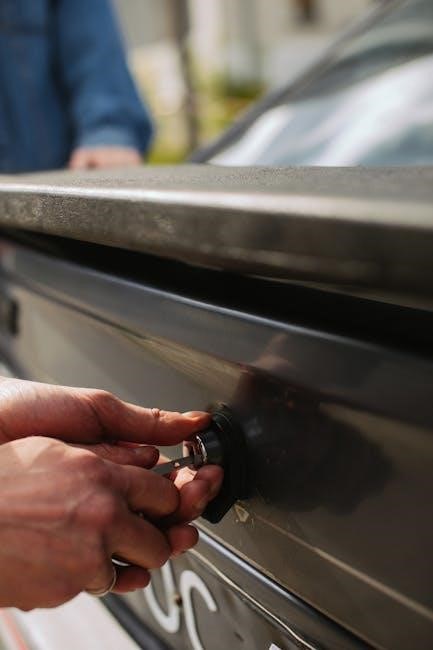Welcome to the Jig Saw Manual! This guide provides essential information for safe and effective operation‚ helping you understand its features‚ capabilities‚ and proper maintenance.
Overview of the Jig Saw and Its Purpose

A jig saw is a versatile power tool designed for cutting curved or straight lines in various materials‚ including wood‚ plastic‚ and metal. Its orbital motion allows for efficient cutting‚ with adjustable settings to suit different materials. The tool is ideal for intricate designs‚ scrolling‚ and precise cuts. Key features include variable speed control‚ ergonomic design‚ and compatibility with various blade types. T-Shank blades are commonly recommended for secure operation. Portability and ease of use make it suitable for both professionals and DIY enthusiasts. The jig saw excels in applications requiring flexibility and accuracy‚ making it an essential tool for woodworking‚ craftsmanship‚ and construction projects.
Importance of Reading the Manual for Safe Operation
Reading the manual is crucial for ensuring safe and effective operation of the jig saw. It provides detailed safety precautions‚ operational guidelines‚ and maintenance tips to prevent accidents. Understanding the tool’s features‚ such as orbital motion and variable speed‚ helps users optimize performance. The manual highlights risks like blade contact and improper handling‚ which can lead to injury or damage. Following the instructions ensures compliance with safety standards and prolongs the tool’s lifespan. Misuse or ignoring guidelines can result in malfunctions or harm. Always prioritize safety by thoroughly reviewing the manual before use to familiarize yourself with best practices and avoid potential hazards.
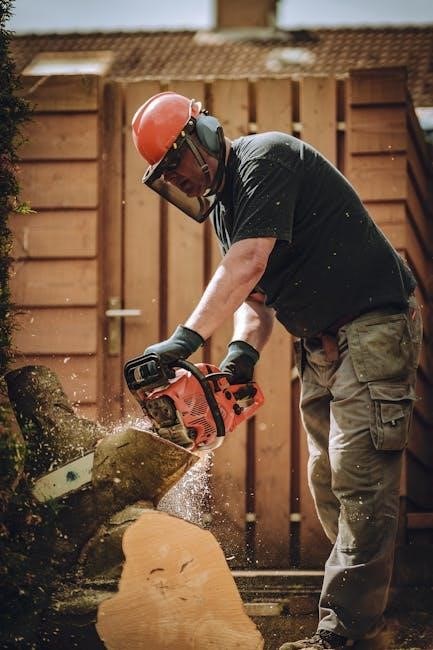
Safety Precautions
Always wear safety goggles and ensure proper ventilation. Avoid loose clothing and keep work areas clean. Never touch blades during operation and use T-Shank blades for secure fitting.
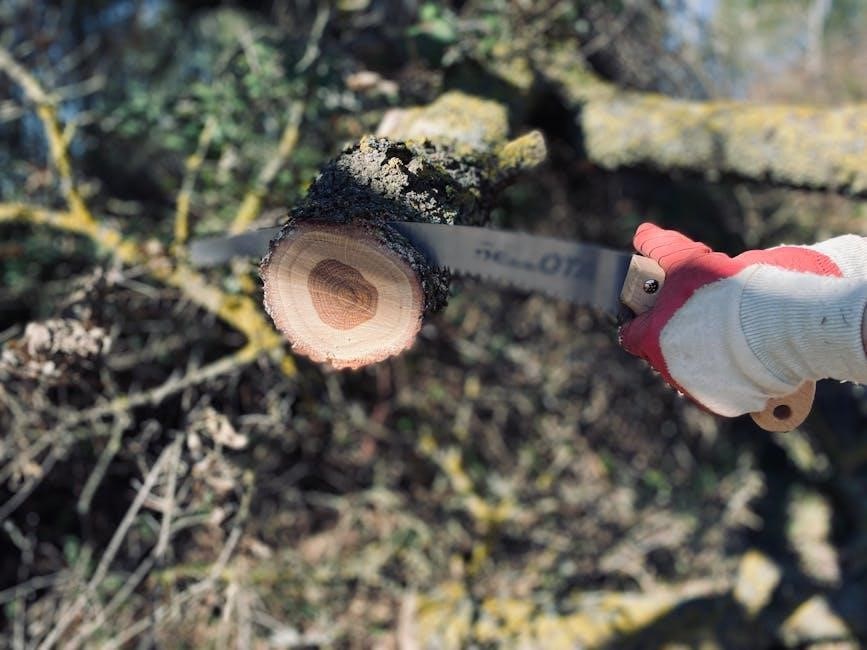
General Safety Guidelines
Always read and understand the manual before using the jig saw. Wear safety goggles‚ gloves‚ and keep loose clothing tied back. Ensure the work area is clean‚ well-lit‚ and free from obstructions. Avoid overreaching and maintain a firm grip on the tool. Never touch the blade during operation‚ as it may cause injury. Keep children and bystanders away from the work area. Use the correct blade type for the material being cut. Ensure proper ventilation‚ especially when cutting materials that produce dust or fumes. Avoid using damaged or worn-out blades‚ as they can cause unpredictable behavior; Store the tool in a dry place‚ out of reach of children‚ and regularly inspect for damage. Follow all safety guidelines to minimize risks and ensure safe operation.
Specific Safety Measures for Jig Saw Operation
Always ensure the jig saw is placed on a stable‚ flat surface before starting. Avoid overreaching or stretching while operating the tool. Keep your hands away from the blade and cutting area at all times. Use the correct blade type for the material being cut to prevent accidents. Maintain a firm grip on the tool with both hands to control its movement. Never touch the blade during or immediately after operation‚ as it remains hot. Position the saw blade 1/2 inch from the cut line and avoid forcing it into the material. Regularly inspect the blade for damage or wear and replace it if necessary. Ensure proper ventilation when cutting materials that produce dust or fumes. Follow these guidelines to ensure safe and controlled operation of the jig saw.
Personal Protective Equipment (PPE) Recommendations
Always wear safety goggles or glasses with side shields to protect your eyes from flying debris. A full-face shield is recommended for added protection. Use gloves to improve grip and prevent hand injuries. Hearing protection‚ such as earplugs‚ is essential when operating the jig saw due to its noise levels. A dust mask should be worn when cutting materials that generate dust or particles. Ensure all PPE fits properly and is in good condition. Additional protective gear‚ such as a long-sleeved shirt and closed-toe shoes‚ can further enhance safety. By following these PPE recommendations‚ you can minimize the risk of injury and maintain a safe working environment while using the jig saw.
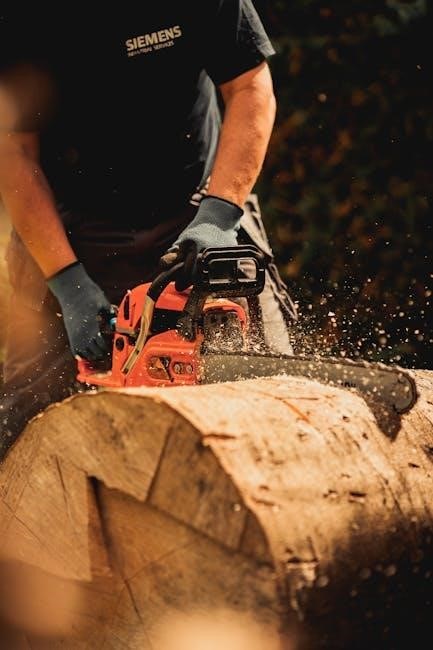
Components and Accessories
The jig saw includes a powerful motor‚ adjustable orbital setting‚ and a secure blade clamp. Key accessories are T-Shank blades‚ rip fences‚ anti-splintering devices‚ and storage cases. Additional tools like hex wrenches and cover plates enhance functionality and organization.
Key Parts of the Jig Saw
The jig saw consists of several essential components designed for precise cutting. The motor powers the tool‚ providing variable speed control. The orbital mechanism enables adjustable cutting actions‚ from straight to curved cuts. A blade clamp securely holds the blade in place‚ ensuring stability during operation. The speed trigger allows for easy speed adjustment‚ while the base plate provides a stable platform for cutting materials. Additional features include a dust extraction port for cleaner workspaces and an ergonomic handle for improved grip and control. These key parts work together to deliver accurate‚ efficient‚ and safe cutting performance across various materials.
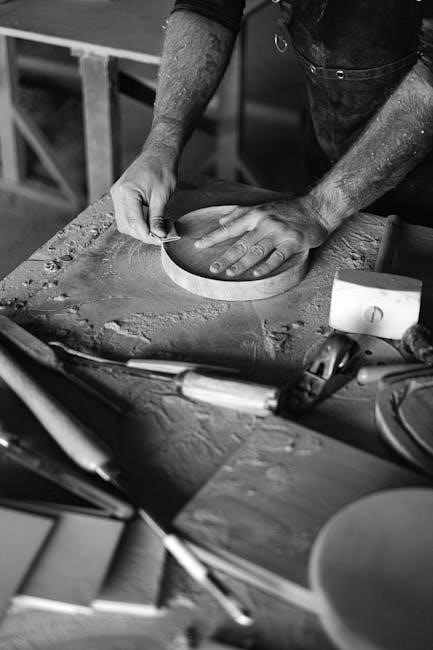
Types of Blades and Their Uses
Jig saw blades are available in various types‚ each designed for specific cutting tasks. T-Shank blades are the most common‚ offering superior grip and versatility for general-purpose cutting. U-Shank blades are ideal for heavier-duty applications but may require a specific tool for removal. Blades with fine teeth are best for precise cuts in thin materials like metal or plastic‚ while coarse teeth excel at faster cutting in thicker wood. Scrolled blades are specialized for intricate curved cuts‚ and reverse-tooth blades help reduce splintering when cutting through materials like laminate. Choosing the right blade ensures optimal performance and minimizes damage to your workpiece.
Additional Accessories for Enhanced Functionality
To enhance your jig saw’s performance‚ consider using additional accessories. A rip fence provides stability for straight cuts‚ while an anti-splintering device minimizes material splintering. A vacuum hose attachment helps maintain a clean workspace by extracting dust and debris. Cover plates protect the base from damage‚ and a hex wrench is essential for blade adjustments. These tools optimize your jig saw’s versatility‚ ensuring precise and efficient cutting. Always use compatible accessories to maintain safety and functionality‚ as specified in your manual. Properly utilizing these extras can significantly improve your overall cutting experience and extend the tool’s lifespan.

Operating Instructions
Start by ensuring the jig saw is properly assembled and the blade is securely attached. Use the variable speed trigger for precise control‚ maintaining firm grip and balance.
Preparing the Jig Saw for Use
Before operating the jig saw‚ ensure all components are securely attached and the blade is properly installed. Inspect the blade for damage or wear and replace if necessary. Position the saw blade about 1/2 inch from the starting cut line on the workpiece‚ avoiding pre-contact with the material. Adjust the orbital action based on the material type‚ using straight motion for metal and orbital for softer materials like wood or plastic. Ensure the battery is fully charged or the power cord is securely connected. Always wear safety goggles and maintain a firm grip with both hands to resist kickback forces. Proper preparation ensures safe and precise cutting.
Adjusting the Orbital Action for Different Materials
Adjusting the orbital action on your jig saw is crucial for optimizing cuts in various materials. Set the orbital action to “straight” for precise cuts in metal or thick materials‚ minimizing blade deflection. For softer materials like wood or plastic‚ use an orbital setting‚ which provides a more aggressive cutting motion. Higher orbital settings increase blade movement‚ speeding up cuts but potentially reducing accuracy. Always match the orbital setting to the material type and desired cut quality. Start with a lower setting and increase as needed to avoid damaging the workpiece. Proper adjustment ensures efficient‚ clean‚ and controlled cutting across different applications.
Making Straight and Curved Cuts
Making straight and curved cuts with a jig saw requires precision and control. For straight cuts‚ use a high orbital setting and a rigid blade‚ guiding the saw firmly along the marked line. Maintain steady speed and apply gentle to moderate pressure. For curved cuts‚ switch to a lower orbital setting and use a flexible blade. Move the saw smoothly‚ following the curve without applying excessive force. Use a fine-tooth blade for intricate curves and a coarse-tooth blade for faster‚ rougher cuts. Always maintain blade sharpness and appropriate feed rates to ensure clean‚ accurate results. Practice on scrap material to master both straight and curved cutting techniques effectively.

Maintenance and Care
- Regular cleaning prevents dust buildup and ensures smooth operation.
- Lubricate moving parts periodically to reduce friction and wear.
- Store the jig saw in a dry‚ cool place to prevent rust.
- Use blade storage boxes to protect and organize saw blades.
Regular Cleaning and Lubrication
Regular cleaning and lubrication are crucial for maintaining your jig saw’s performance and extending its lifespan. Use a soft brush or cloth to remove dust and debris from the tool‚ especially around the blade area and motor housing. Lubricate the moving parts‚ such as the blade clamp and orbital mechanism‚ with a high-quality machine oil to reduce friction and wear. Avoid over-lubricating‚ as excess oil can attract more dust. Clean the blade regularly to ensure accurate cuts and prevent material buildup. For optimal results‚ lubricate the tool every 10-20 hours of use or when you notice increased friction. Always store the jig saw in a dry‚ cool place after cleaning to prevent rust and damage.
Blade Storage and Replacement
Proper blade storage and replacement are essential for maintaining jig saw performance. Store blades in a dry‚ protected area to prevent rust and damage. Use the original blade case or a protective pouch to keep them organized and secure. When replacing a blade‚ ensure it is compatible with your jig saw model and suitable for the material you are cutting. Align the blade correctly with the clamp and tighten securely to avoid vibration. Inspect blades regularly for signs of wear or damage‚ and replace them immediately if dull or bent. For optimal results‚ use high-quality blades designed for your specific tasks. Always follow the manufacturer’s instructions for blade replacement and disposal.
Proper Storage of the Jig Saw
Proper storage of your jig saw is crucial for maintaining its performance and longevity. Always store the tool in a cool‚ dry place‚ away from direct sunlight and moisture to prevent rust and damage. Use the original storage case or a protective cover to shield it from dust and accidental impacts. Before storing‚ ensure the jig saw is clean and free from debris. Inspect the tool for any damage and address issues promptly. Secure loose parts‚ like blades or accessories‚ to prevent movement during storage. If storing for an extended period‚ recharge the battery to maintain its health. Keep the jig saw out of reach of children and unauthorized users to ensure safety.
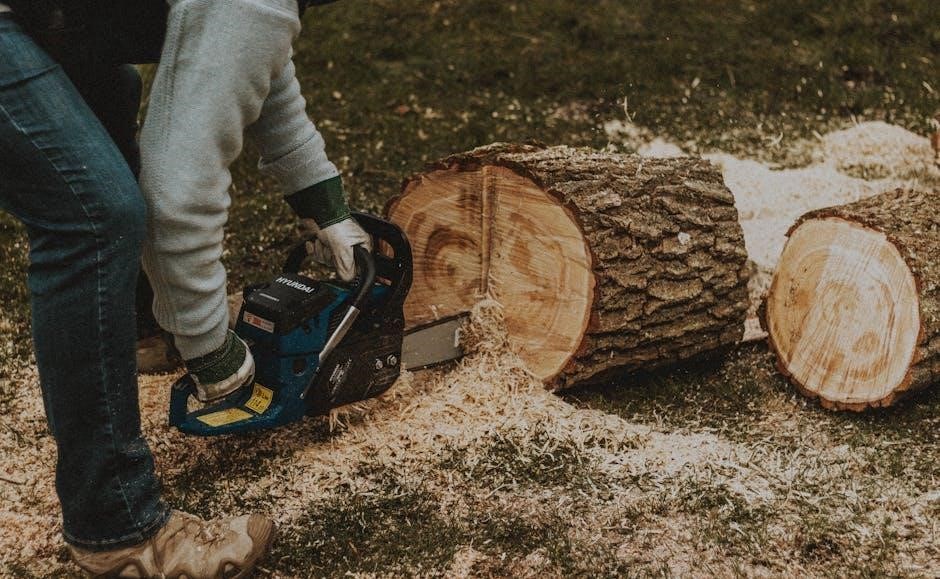
Troubleshooting Common Issues
Address blade malfunctions by ensuring proper installation and sharpness. Prevent motor overheating with regular breaks and clean cooling vents. Reduce vibration and noise by tightening loose parts and using balanced blades.
Blade Malfunction and Solutions
Blade malfunctions are common issues in jig saw operation. Dull or damaged blades can cause poor cutting performance and should be replaced immediately. Improper blade installation may lead to misalignment‚ resulting in uneven cuts or blade breakage. To fix this‚ ensure the blade is securely fastened and aligned correctly. Blade slipping can occur if the tension is too low; adjust the tension according to the manufacturer’s guidelines. Additionally‚ using the wrong type of blade for the material can cause malfunctions. Always select blades suitable for the task at hand. Regular blade maintenance‚ such as cleaning and storing them properly‚ can prevent future issues.
Motor Overheating and Prevention
Motor overheating is a common issue that can lead to reduced performance or damage to your jig saw. Continuous operation without adequate breaks can cause the motor to overheat. To prevent this‚ allow the tool to cool down periodically‚ especially during prolonged use. Using the wrong blade type or applying too much pressure can also strain the motor‚ leading to overheating. Ensure proper ventilation in the workspace to maintain airflow. Additionally‚ regular maintenance‚ such as cleaning dust from vents and ensuring proper lubrication‚ can prevent overheating. Always follow the manufacturer’s guidelines for operation and maintenance to prolong the motor’s lifespan.
Vibration and Noise Reduction Tips
To minimize vibration and noise while using your jig saw‚ ensure the blade is properly secured and compatible with the material. Dull or damaged blades can cause excessive vibration‚ so replace them regularly. Loose parts or improper assembly of the tool can also contribute to noise; always tighten components as instructed. Using a high-quality blade designed for your material reduces vibration and noise. Additionally‚ maintaining a firm grip on the handle and keeping the workpiece stable helps reduce movement. Anti-vibration accessories‚ such as padded grips‚ can further enhance comfort and control. Regularly cleaning and lubricating moving parts also helps minimize operational noise and vibration.
Mastering your jig saw involves understanding safety‚ productivity‚ and maintenance. By following guidelines and using proper techniques‚ you ensure efficient and safe operation every time.
Final Tips for Optimal Jig Saw Performance

- Always use the correct blade type for your material to ensure clean cuts and extend blade life.
- Regularly clean and lubricate moving parts to maintain smooth operation and reduce wear.
- Keep the workpiece stable and secure to avoid vibrations and improve accuracy.
- Avoid forcing the blade through material‚ as this can cause breakage or overheating.
- Wear proper PPE‚ including safety goggles‚ to protect against debris and dust.
- Store the tool and blades in a dry‚ protected area to prevent rust and damage;
- For cordless models‚ monitor battery levels and avoid overcharging to prolong battery life.
By following these tips‚ you can maximize the performance and longevity of your jig saw while ensuring safe and efficient use.
Importance of Following the Manual
Adhering to the jig saw manual is crucial for ensuring safety‚ optimal performance‚ and extending the tool’s lifespan. The manual provides detailed guidelines tailored to your specific model‚ helping you avoid potential hazards and maintain warranty coverage. Failure to follow instructions can lead to accidents‚ damage to the tool‚ or voiding the manufacturer’s warranty. Proper usage and maintenance‚ as outlined‚ prevent premature wear and ensure reliable operation. Always refer to the manual for troubleshooting and maintenance tips to keep your jig saw in peak condition. Ignoring the manual increases the risk of injury and reduces the tool’s efficiency and longevity.
